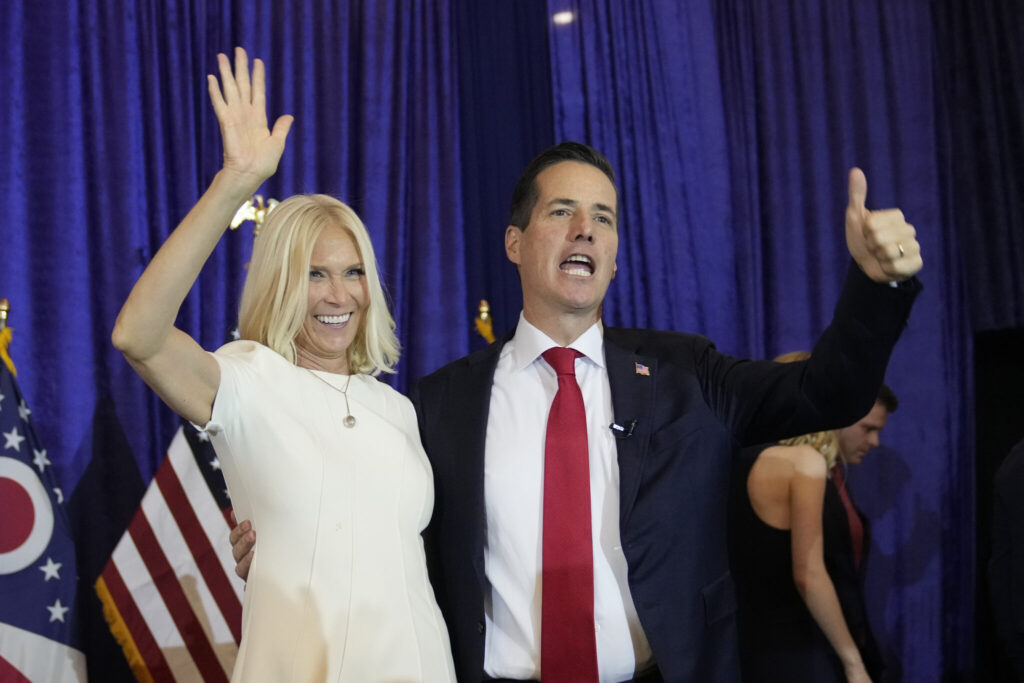Republicans take Senate majority/ GOP House Senate control/ Trump Congress control/ unified GOP government 2024/ U.S. election results Senate House/ Newslooks/ WASHINGTON/ J. Mansour/ Morning Edition/ Republicans gained control of the U.S. Senate in a critical victory that could solidify a unified GOP government under President-elect Donald Trump, pending House results. This majority, achieved through pivotal wins in battleground states, aligns the Senate to support Trump’s agenda on taxes, immigration, and regulatory reform, while House races remain close.

Republicans Take Senate Control, Seek House Majority with Trump: Quick Looks
- Senate Victory Secured: Republicans claim the Senate majority, flipping key battleground seats.
- Trump’s Influence: Trump’s win and the GOP Senate sweep highlight voter frustration over the economy and immigration.
- House Control in Play: The GOP holds an advantage but needs to secure more seats to gain full control.
- Historic New Members: Two Black women and a Korean American win Senate seats; Delaware elects first openly transgender House member.
- 100-Day GOP Plan: House Republicans propose a robust agenda on tax cuts, immigration enforcement, and regulatory rollback.
Republicans Secure Senate Majority, Eye Unified Government with Trump
Deep Look
The Republican Party has claimed the Senate majority and is on the brink of full control of Congress, potentially giving President-elect Donald Trump a unified GOP government. Securing the Senate in Tuesday’s election, Republicans are now closely watching House races, which remain in play, to determine whether they will hold both legislative chambers. If Republicans secure the House, it would open the door for Trump to implement an ambitious agenda focused on tax cuts, immigration enforcement, and regulatory reductions.
Senate Control: Key GOP Victories
Republicans secured pivotal wins across battleground states, flipping seats held by Democrats and independent challengers. The night’s momentum began with West Virginia, where Republican Governor Jim Justice won a seat vacated by retiring Democratic Senator Joe Manchin. It continued with notable victories in Ohio, where Republican Bernie Moreno defeated longtime Democratic Senator Sherrod Brown, and in Montana, where former Navy SEAL Tim Sheehy unseated Democrat Jon Tester, winning crucial support from Trump-aligned voters.
The GOP’s gains in the Senate followed a campaign fueled by voter dissatisfaction with the economy and concerns over immigration, both focal points of Trump’s platform. Trump’s campaign heavily influenced voter turnout, and his Senate majority could streamline his policies as Republicans build toward a unified government. Trump celebrated the results at his election night gathering in Florida, describing the Senate outcome as a “powerful mandate” for the Republican Party.
Trump-Aligned GOP Agenda in Focus
With a potential GOP sweep of Congress, House Speaker Mike Johnson outlined an aggressive 100-day plan to capitalize on unified control. Priorities include tax cuts, securing the U.S. southern border, and easing federal regulations, with Johnson declaring the plan a “blowtorch” to regulatory red tape. The agenda also aims to shift federal agency operations out of Washington, D.C., part of an effort to “bring the federal government to heel,” according to Johnson.
Trump’s vision for his administration includes implementing large-scale deportations and targeting federal agencies, intending to revamp the government workforce to align with his administration’s goals. “Trump is thinking big about his legacy,” Johnson said, highlighting the president-elect’s intent to make lasting changes during his second term.
Key Wins for Democrats and Historic Firsts
Despite GOP gains, Democrats made significant strides with several historic wins in Congress. Voters elected two Black women, Lisa Blunt Rochester (D-Del.) and Angela Alsobrooks (D-Md.), to the Senate for the first time. In Maryland, Alsobrooks triumphed over Republican and former Governor Larry Hogan, while Andy Kim (D-N.J.) became the first Korean American elected to the Senate after defeating a Republican challenger. These wins mark the first time two Black women will serve simultaneously in the Senate.
In Delaware, Sarah McBride became the first openly transgender person elected to the U.S. House of Representatives, marking a significant moment for LGBTQ representation in Congress. McBride, a state lawmaker close to the Biden family, will represent Delaware in a newly diverse House.
House Majority Still in Play
Control of the House remains uncertain as votes continue to be counted in critical races. Democrats are attempting to flip at least four Republican-held seats, particularly targeting districts in New York and California where the GOP has recently gained ground. If Democrats manage to take back the House, it would present a check on Trump’s policy ambitions, effectively creating a divided Congress.
While Republicans seek to expand their influence, Democrats have rallied around core issues, including the economy and immigration, to appeal to their base. AP VoteCast polling revealed a split electorate, with many Americans expressing concerns about the economy and immigration while others prioritized maintaining democracy and stability.
House Republicans have also faced internal struggles leading up to Election Day. The previous congressional term was marked by turbulence as Republicans grappled with internal divisions, including the ouster of former House Speaker Kevin McCarthy and multiple government shutdown threats. The party has been eager to project a unified front, emphasizing cohesion under Speaker Mike Johnson’s leadership.
Preparing for a New GOP Senate Leader
As Republicans look forward to their Senate majority, a major leadership change is on the horizon with the retirement of Senate Minority Leader Mitch McConnell. South Dakota Senator John Thune and Texas Senator John Cornyn, both experienced GOP leaders, are considered the front-runners to succeed McConnell. The decision will be made by a secret ballot when the Senate reconvenes in Washington next week.
McConnell’s departure marks the end of a significant era for the GOP, as he was instrumental in shaping the conservative judiciary and pushing key legislation through the Senate. His successor will face the task of guiding the Republican agenda through the Senate amid intense public scrutiny and party expectations for significant legislative wins.
Looking Ahead: A Republican-Driven Congress
A unified GOP government would position Trump and Congress to pursue a sharply conservative agenda, one that has been described as transformative by Republican leaders. Trump’s second term could reshape federal governance through agency reforms and a focus on nationalist policies that could alter the U.S.’s role in international alliances. However, if Democrats secure the House, it could mean a more balanced and contentious relationship between the legislative and executive branches.
If Republicans indeed hold both chambers, it will be the first time in U.S. history that both chambers have flipped to opposing parties simultaneously. This rare occurrence would mark a significant shift in American political dynamics, aligning Congress and the executive branch under a consolidated Republican vision.
With historic wins, an ambitious agenda, and a likely new Senate leader, the GOP is poised to assert control over the direction of American policy for the next several years. Whether Democrats retain a foothold in the House or Republicans achieve complete control, the landscape in Washington is set for sweeping legislative and policy changes as the country embarks on this new political chapter.







